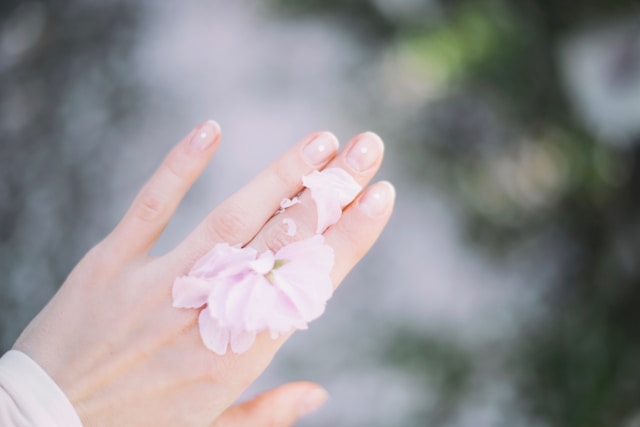In today’s date, there are multiple choices for a durable manicure, including gel nail extensions, dip nails, acrylic nails, and gel paint. Most individuals want to settle on a single nail enhancement method and never stray from it, at least not until a better option becomes available. Builder gel, often known as BIAB (building gel in a bottle), is a new and stylish addition to manicures that is becoming more popular. Think of builder gel as an upgraded version of regular gel nail polish. If you want longer nails, stronger natural nails, or longer nails using molds or nail tips, this is a fantastic choice. Keeping scrolling, we’ll fill you in on all the details regarding building gel nails, so you can impress your salon stylist with a more sophisticated manicure the next time you go in. Applying builder gel to your nails almost makes them unbreakable. Even though you could hear your nails scratching against the rocks while climbing, not a single one of them broke. In simple terms, users can use it on all of their nails and add a builder gel extension to each pinky.
Table of Contents
Builder Gel vs. Classic Gel
While the regular gel is great for protecting nails from light and adding color, it won’t change their length or shape or strengthen broken or weak nails. With the use of builder gel nails, you may shape and lengthen your nails to your liking while simultaneously encouraging the growth of your natural nails.
Builder Gel: A How-To
If you’re looking for a soft gel alternative to acrylics or hard gel for building and shaping nail extensions, consider builder gel. It goes on like a soft gel when applied directly from the container, yet it lasts as long as a hard gel. A gel base coat is necessary for some builder gels, while others may be applied straight to the natural nail. To facilitate the natural development of your nails, you may replenish the building gel every week after applying it. The technician will simply file down the underside of the nail, restore its natural shape, and then paint or decorate it with gel. To remove it and return to your original nails, simply soak it off. Having a soak-off solution helps reduce damage, as most of the destruction caused by nail extensions occurs during removal.
The Advantages of Builder Gel
1. Strengthen
Builder gel acts like armor for your nails, making them more breaking-resistant. The nail’s composition of dead keratin makes it vulnerable to chipping, breaking, and wear and tear when exposed to water or air. Using a builder gel regularly keeps the nail well-coated, conditioned, and cared for.
2. Restore
You can use building gel, which is similar to glue, to repair broken nails with a torn tip that is still partially attached. Furthermore, for chipped nails, builders can be used to fix those uneven corners.
3. Lengthen
Use builder gel to make your nails longer. The process begins with your manicurist placing detachable forms over your nails, ensuring they rest snugly on the free-edge line. Next, they’ll mold the builder to your preferred length and shape by painting it over your natural nails on a form. After that, they’ll cure the nails. Your manicurist will file and shape your nails until they are flawless when the forms are removed and the polish has hardened. They are then prepared to be polished.
4. Constructed to Stay
Two to three weeks is the average duration of builder gel. Its thick, sturdy consistency makes it less likely to lift than ordinary gel nails paint. To save money and time, you may fill up your builder gel and hard gel instead of buying a new set every time you get your nails done. Fills are a great way to give your manicure a new appearance by focusing on the growth at the base of your nail and filling in any gaps with new builder gel.
5. An Improvement Over Acrylic
Your subjective taste is the only determinant of the relative merits of building gel and acrylic. Because it forms a thin layer on your nails that permits them to stay healthy and develop while you wear the paint, bottle-based builder gel is gentler on your natural nails than artificial. You should use a container of building gel if you want your natural nails to grow longer and more robust. Because it is necessary to file off hard gel, doing so improperly can inflict significant stress on your nails. Acrylic is particularly dangerous for natural nails because, when applied with excessive filing, it can weaken the nails and, when broken, shatter them like shards of glass.
Simple Instructions for Applying Builder Gel:
Natural nails are strengthened and lengthened with builder gel. To create a gel manicure that lasts, it is essential to apply builder gel correctly. Learn the fundamentals of using builder gel with these guidelines.
- Use a nail buffer to smooth down the nail plate.
- To eliminate oils, apply a nail dehydrator to the surface of each nail.
- Add the foundation or base gel and cure it with ultraviolet or light-emitting diode light.
- Stick the nail shape on your original nail.
- Apply a builder gel bead from the tip of the nail to the free edge using a brush. Gel streaks may be prevented by tapping and dragging the gel. The long nail extension may be easily made by applying building gel along the nail form. Be careful to apply the gel to the length of your desired nails.
- Wait for the nails to dry completely before shaping and filling them.
- Cleanse each nail by removing the inhibitory layer.
- Carefully remove the nail forms from each nail, then any remaining dust.
- If you’d like a gel color, apply it. Then, use a top coat that is compatible with gels to finish.
- Finish the manicure by curing the nails.
In the end!
To create manicures that are both attractive and healthy, builder gel is a versatile tool. This is the way to go for bold extensions when you want stronger nails and a more dramatic look. Thanks to the variety of gels available, novice and experienced nail technicians can create unique gel manicures.
















